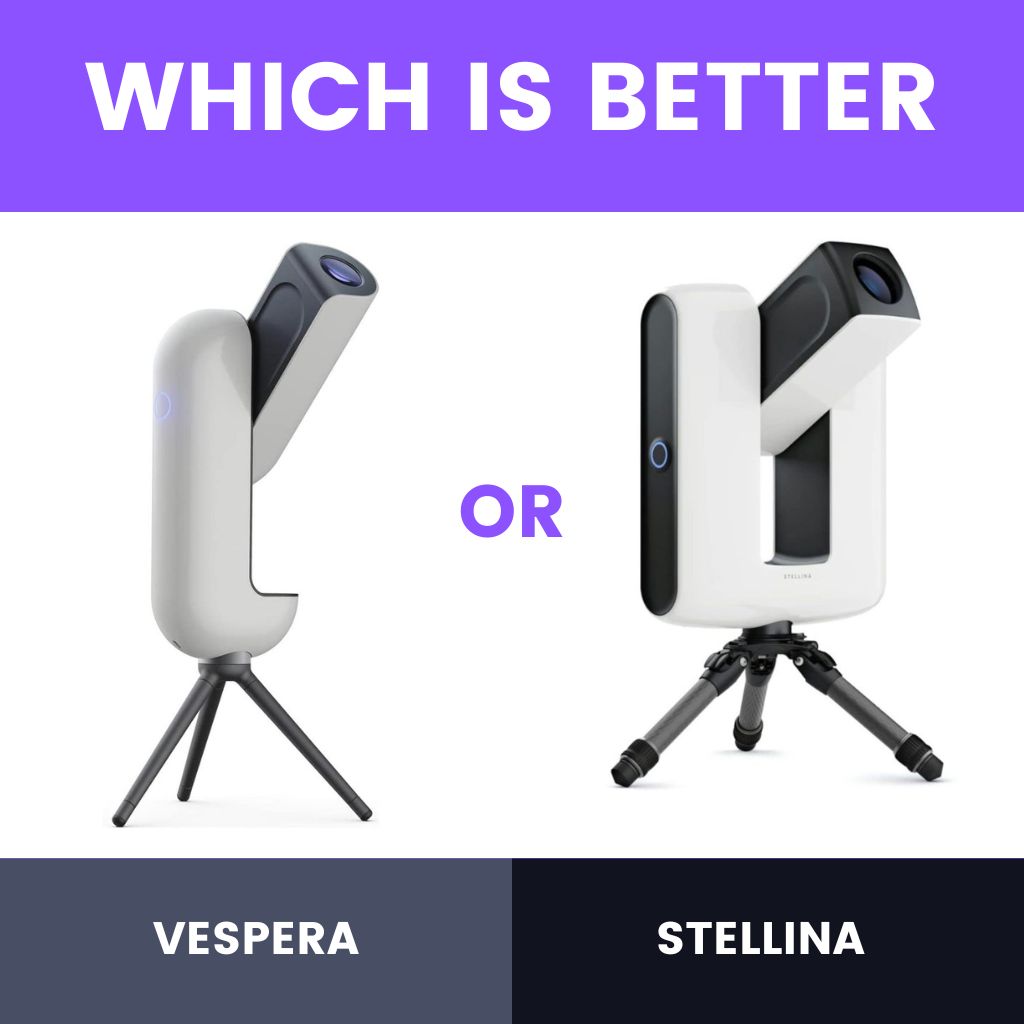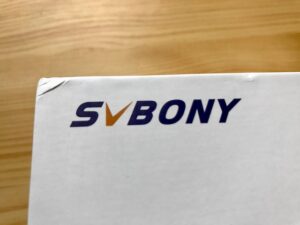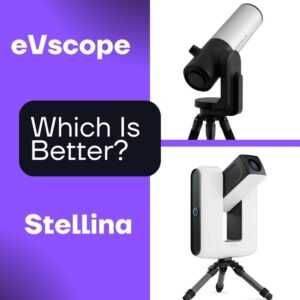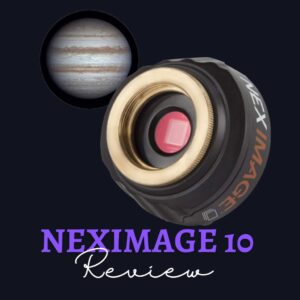This site contains affiliate links to products. I may receive a commission for purchases made through these links.
Vespera and Stellina are smart hybrid telescopes with advanced features for capturing high-quality night sky images. While both are excellent astrophotographic devices, Stellina has a clear advantage with a larger aperture, longer focal length, and better camera sensor resolution.
However, with many of the features found in Stellina, Vespera is still a great option for those looking for a more lightweight, portable telescope that is easy to use and great for beginners.
As more people become intrigued by the grandeur of the night sky, the result is a prevalence in the popularity of astrophotography.
Several astrophotographers now utilize sophisticated equipment to produce beautiful pictures of celestial phenomena. Two such tools that have gained a lot of attention are Vespera and Stellina.
If you are looking to buy a telescope but are not sure which to choose between these two, worry not. We are here to help smoothen your decision-making.
In this blog post, we will compare Vespera and Stellina’s key features and discuss in detail several key factors, including price, image quality, battery life, aperture size, magnification, ease of use, and portability, among other essential elements to help you make an informed decision on which one to buy.
Let’s begin!
Stellina vs. Vespera: Comparison of key features
Stellina and Vespera are two of the latest hybrid telescopes you can buy. While both are smart telescopes made by the same company and have similar technology, they have their uniqueness.
If you are considering purchasing one of these telescopes and are deciding which you should buy, the following comparison should help you decide.
Aperture size
Stellina has an aperture size of 80mm/3.15 inches, while Vespera has a smaller size of 50mm/2-inch. This means Stellina will let you observe deep sky objects in fine detail compared to Vespera due to its larger aperture size.
A larger aperture allows more light to get into the telescope and gives you a higher resolution for capturing fainter objects in the sky.
Focal length
Stellina has a focal length of 400mm, twice the focal length of Vespera (200mm). A longer focal length allows you to capture a narrower angle of view and gives you higher magnification.
It compresses distances and makes objects seem much closer to the naked eye.
Since Stellina has a longer focal length than Vespera, you can better view galaxies, clusters, and nebulae. On the other hand, a shorter focal length allows you to capture a broader view and give you a deeper depth of field.
This makes Vespera perfect for casual visual observations of deep-sky phenomena, such as the moon, sun, galaxies, and nebulae but lacks the same resolution the Stellina offers.
Camera sensor resolution
Stellina has a higher camera sensor resolution of 6.4 megapixels than Vespera’s 2 megapixels. A higher resolution allows for more detailed and sharper images. This means that Stellina, with a higher resolution, will give you better image quality results than Vespera.
Maximum exposure time
Stellina images exposure time ranges from 10 to 30 and up to 120 minutes, which is then stacked automatically into a total exposure time using many individual exposures. Unlike Stellina, Vespera has a maximum exposure time of 10 seconds.
A longer exposure time allows you to see the beauty of far-distant objects in all its glory.
Since Stellina has a longer exposure time than Vespera, it will let you see more colors and details giving you better image quality.
Although Stellina has a longer exposure time than Vespera, it has a shorter exposure time than regular astrophotography rigs, so you won’t get the same when viewing faint nebulosity.
Nevertheless, you still get to see the fine details with an impressive view.
Tracking technology
Both Vespera and Stellina have advanced Go-To tracking technology that allows them to precisely track celestial objects’ movement, compensating for the Earth’s rotation.
Power supply
Stellina is powered by an external battery that lasts up to five hours. Its removable battery gives it an edge since you can take a second, fully charged battery. This makes Stellina more convenient to use, especially for outdoor astrophotography, compared to Vespera.
Charging is done via any conventional socket. Alternatively, Stellina can also be permanently powered over a USB-Type-C connection.
On the other hand, Vespera is AC-powered and has a USB power supply integrated battery type that can last up to four hours which is good enough for outdoor astrophotography but is less flexible than Stellina.
Field of view
Stellina has a large field of view of 1 degree x 0.7 degrees. In contrast, Vespera has a slightly wider field of view of 1.6° x 0.9 degrees. A larger field of view allows for capturing more expansive areas of the night sky.
Vespera’s large field of view makes it fit for visual observation of larger sky objects compared to Stellina.
Magnification range
Stellina has a magnification range of 50x and up to 100x with digital zoom, while Vespera has the highest useful magnification of 33x.
Stellina with a higher magnification range will enable you to see smaller details or resolve images better than Vespera with a lower magnification.
Image sensor type
Stellina uses a Sony IMX178 CMOS sensor with an HD resolution of 3,096 x 2,080 pixels. Vespera, on the other hand, uses a Sony IMX462 Starvis sensor image sensor with HD resolution (1920 x 1080 pixels).
The sensors in these telescopes can detect a target in five minutes and take one photograph every 10 seconds, depending on the target.
This delivers a field of view of 1 degree x 0.7 degrees and 1.6° x 0.9°, respectively, making them a small, rich field telescope for capturing high-quality images of celestial objects.
Imaging capabilities
Both Stellina and Vespera have advanced imaging capabilities that allow for capturing high-quality images of celestial objects. And you can save images on both instruments.
However, Stellina’s more advanced camera sensor, larger aperture, and longer exposure time give it an edge over Vespera.
Price and affordability
Vespera is more affordable than Stellina. Hence, Vespera might be an attractive option for those on a tight budget.
However, it is essential to note that Vaonis Stellina offers additional features, such as a larger aperture, higher image resolution, and a more advanced control system which could justify the higher price tag for some astrophotographers.
But if you are on a tight budget, you can check out Vaonis Vespera.
Vespera or Stellina, which telescope is better for you?
Two of the most well-known smart telescopes on the market are Vespera and Stellina. Both devices have cutting-edge technologies, including high-resolution sensors, potent processors, and Wi-Fi connectivity, but they each have certain advantages and disadvantages.
As a result, here is the information you need to decide which is superior for your requirements.
Stellina has a better image quality than Vespera
The Stellina telescope features a larger aperture size, longer focal length, a higher resolution camera sensor, a focal ratio, and a higher magnification range. These features combine to create high-quality, detailed images of celestial objects.
In comparison, the Vespera telescope has a smaller aperture size and a more limited camera sensor resolution, which can result in less detailed images.
Although both instruments deliver detailed images of good quality, Stellina has an edge since it collects more information and offers a better resolution.
Stellina is better for astrophotography, while Vespera is better for visual observing
Stellina is better suited for taking high-quality pictures of celestial objects because it has a larger aperture size, a higher resolution camera sensor, a longer focal length, a longer exposure time, and a large field of vision.
Stellina’s advanced tracking technology and automatic image stacking and editing capabilities further enhance the quality of the images captured, making it a fantastic choice for astrophotographers.
On the other hand, you ought to pick the Vespera telescope if a visual observation is your main concern. Despite its smaller aperture and lower camera sensor resolution, Vespera nevertheless has many qualities that make it a great choice for visual observation.
It’s crucial to consider your intended use for the telescope while deciding between the Stellina and Vespera. Although both telescopes have various features and advantages, they are each better suited for particular uses.
Stellina has a longer battery life than Vespera
Stellina comes with a 10,000-mAh battery that is easily stored in its compartment and gives about 5 hours of use. Vespera, with a battery life of 7,000 mAh, can last only four hours.
This means you can use the Stellina for longer observing sessions without worrying about running out of power. This is particularly useful if you plan to take the telescope with you on a camping trip or to a remote observing site with limited access to electricity.
Vespera’s more limited battery life can be a drawback for some users. While the Vespera’s battery can provide several hours of use, more is needed for extended observing sessions or use in areas without access to electricity.
In this case, it is best to have a smartphone battery nearby and the proprietary charging cable when using the Vespera.
You may also like: What is the lifespan of a home telescope
Stellina allows for longer exposure times than Vespera
The Stellina telescope has a longer exposure time that typically ranges from 15 to 30 and up to 2 hours which is considerably longer than the Vespera’s exposure time of 10 seconds.
Longer exposure times can be significant for astrophotography, as they allow more light to be captured, which results in higher-quality images.
In addition, however, it’s worth noting that longer exposures also require more power, and as we mentioned previously, Vespera’s battery life is more limited than Stellina’s.
This makes Stellina the best choice for extended observing sessions where power availability is necessary.
Vespera has a wider field of view than Stellina
Vespera has a slightly wider field of view of 1.6° x 0.9 degrees compared to Stellina, which makes it a better option for capturing wide-angle shots of the night sky.
Regarding portable astrophotography, having a wide field of view can be a significant advantage.
A telescope with a wide field of view lets you capture more of the night sky in a single shot, making capturing images of entire constellations, star clusters, double stars, and nebulae easier.
While Stellina provides a higher-quality image, making it an excellent option for portable astrophotography, it may not be the best choice to capture wide-angle night sky shots.
If capturing wide-angle shots of the night sky is your priority, then the Vespera is the better option. However, if you’re looking for a telescope that is easy to use, great for beginners, and gives a sharper visual result, Stellina is still a great choice.
Vespera is more affordable than Stellina
Of the two telescopes, Vespera is generally more affordable than the Stellina, with prices of just over a thousand dollars. This makes the Vespera an excellent option for beginners or those just starting astrophotography and wanting to try it out without breaking the bank.
Although Vaonis Stellina is more expensive, it’s essential to note that its advanced features and high-quality optics may justify the higher price tag for some experienced astrophotographers.
That said, carefully consider your needs and budget before making a decision.
You may also like: Is Stellina Worth the Money? (Read This First!)
Stellina is more dependent on app and Wi-Fi connectivity than Vespera
Vespera and Stellina telescopes both share the same app. But when it comes to Wi-Fi connectivity, both Stellina, and Vespera are the same. The only significant difference is that Stellina has a lower Wi-Fi network range of about 10 meters without obstacles, while Vespera is longer at 30 meters.
This means you can easily install Vespera in your garden and control it without losing the network from home.
Additionally, Stellina is more dependent on the app and requires reliable Wi-Fi access to function correctly because of its limited Wi-Fi network range.
This may be a drawback for astrophotographers who prefer to use their telescopes alone or live in places with low Wi-Fi connectivity.
Vespera is more portable and lightweight than Stellina
Vespera and Stellina telescopes are designed for portable use, but portability and lightweight attributes are where Vespera truly shines. Vespera is a compact and lightweight telescope that can easily be transported from one location to another.
It weighs around 11 pounds. Its small size makes it easy to fit into a backpack or carry-on bag for travel.
Vespera is an ideal option if you like to travel to remote locations for stargazing and want a telescope that is easy to transport.
Stellina, on the other hand, is a slightly larger and heavier telescope weighing about 25 pounds.
Although it is designed for portable use, its larger size and weight can make it more challenging to transport, especially if you will be traveling long distances on foot or carrying the equipment.
Nevertheless, Stellina does come with a carrying case that makes it easier for you to carry it. Its advanced features, such as its larger aperture size and improved image resolution, may justify its larger size and weight.
Benefits of the Stellina telescope

The Stellina telescope is a cutting-edge tool that offers a range of benefits to astrophotography enthusiasts. Here are some of the key benefits of using the Stellina telescope
High-quality imaging
One of the standout features of the Stellina telescope is its high-quality imaging capabilities. The telescope is equipped with a 6.4-megapixel CMOS sensor capable of capturing detailed and sharp images of celestial objects.
The advanced camera technology and tracking system ensure that beautiful images are captured with minimal noise, making Stellina a great choice for capturing stunning astrophotography.
User-friendly interface
The user-friendly interface of the Stellina telescope is yet another major advantage. The telescope is controlled via a smartphone app that is simple and intuitive to use.
You can instantly set up the telescope and take beautiful pictures with just a few clicks. This makes Stellina the perfect tool for people new to astrophotography because of its user-friendly interface and ease of use for beginners.
Wide database of celestial objects
Stellina has an extensive database of celestial objects, including planets, galaxies, nebulae, and more.
The database is constantly updated with new objects, ensuring users can access the most recent discoveries in the night sky. This makes it a great learning tool for astronomy enthusiasts.
Portability
Stellina is designed to be portable, making it great to take with you when traveling. The telescope is simple to pack up and move to your desired location because it is small and light.
This makes it the ideal instrument for astronomers who appreciate visiting new locations to take breathtaking night sky photographs.
Advanced technology
Stellina is packed with advanced technology, including high-quality optics, an advanced Go-to tracking system, a light pollution filter, and a powerful camera sensor. These features work together to provide users with stunning views of celestial objects.
The technology used by Stellina also makes it easier to capture images in challenging conditions, such as when the moon is exceptionally brilliant or when there is a lot of light pollution.
Limitations and challenges of the Stellina telescope
While the Stellina telescope offers a range of benefits, it also has some limitations and challenges that users should be aware of before making a purchase. Here are some of the critical limitations of the Stellina telescope.
High price point
The Stellina telescope comes with a high price tag, making it out of reach for some users on a tight budget. While the high-quality imaging and advanced technology of the Stellina telescope justify the high price, there may be better choices for those who are just starting out in astrophotography.
Dependence on app and Wi-Fi connectivity
The Stellina telescope is controlled through a mobile app that requires Wi-Fi connectivity to function correctly. This means that users need a stable Wi-Fi connection to operate the telescope, which can be challenging in areas with poor connectivity.
Additionally, the app is the only way to control the telescope, which can be limiting for users who prefer physical controls.
Small aperture size
The Stellina telescope has a limited aperture size compared to the regular telescope. This can impact its ability to capture faint objects in the night sky.
While the telescope’s advanced camera technology and tracking system can compensate for this to some extent, it may not be the best choice for users who want to capture extremely faint objects.
Limited battery life
While Stellina features a built-in battery with up to 5 hours of continuous use, this may not be enough for some users. Those who plan on using the telescope for extended periods may need to bring additional batteries or a charging device.
Limited field of view
Stellina has a narrower field of view, which can make it challenging to capture wide-angle shots of the night sky. Although the telescope’s tracking system can also compensate in this aspect, it may not be the best choice for users who want to capture panoramic night sky views.
Benefits of the Vespera telescope
Vespera is a highly portable telescope that offers a range of benefits to users looking for a compact and convenient way to capture night sky images. Here are some of the key benefits of the Vespera telescope:
Portable and lightweight design
Vaonis Vespera is designed to be extremely portable and lightweight, which makes it simple to carry around. Hence, it is a great option for people who wish to take pictures of the night sky while they’re out camping or traveling.
Here are some of the key benefits of the Vespera telescope
50mm refractive telescope with 200mm focal length
The Vespera telescope is a superb option for taking detailed pictures of astronomical objects as it features a 50mm refractive telescope with a 200mm focal length. Its quadruplet 50mm lens comprises two lenses in two groups built with lanthanum glass.
According to Vaonis, the glass helps the telescope produce zero astigmatisms, chromatic aberration, and zero distortion.
Hence, users are able to take beautiful, bright images of the night sky thanks to its aperture size and focal length.
Built-in battery with up to 4 hours of continuous use
The Vespera telescope features a built-in battery that provides up to 4 hours of continuous use, allowing users to capture night sky images for extended periods without needing to recharge the telescope.
Compatibility with iOS and Android devices via app
Vespera app is compatible with iOS and Android devices via a dedicated app, allowing users to control the telescope and capture images using their smartphone or tablet. This makes sharing images with friends and family easy or posting them on social media.
Automatic tracking and pointing technology
The Vespera telescope features automatic tracking and pointing technology, making it easy to find and track celestial objects.
Once you have chosen a stellar object to study, Vespera will automatically track it using its internal computer-controlled motor until you tell it to stop (or lose sight), adjusting for Earth’s spin.
When you successfully get a photo, you can download it directly into your phone and save it as a JPEG, “lossless RAW,” or even a TIFF for manual editing later.
Vespera is an excellent choice for users who are new to astrophotography and want a telescope that is easy to use.
Image stacking and editing capabilities
The Vespera telescope features built-in image stacking and editing capabilities, allowing users to capture multiple images and combine them to create a single high-quality image of celestial objects, even in areas with light pollution.
To explain how this works following what we mentioned in the above section, Vespera will move to capture the images and begin its autofocus routine after selecting the stellar object you want to view.
When this is finished, you will start to see the images, which get brighter and clearer the longer and more images you let the device take and stack.
Vespera will keep stacking the images and reducing their noise until you instruct it to stop or when the object is no longer visible in the night sky.
For most of the objects the observation station can capture, Vaonis advises a minimum of 10 to 15 minutes of capture time, with some objects needing significantly more than an hour or two to produce a decent image.
During this time, you can wait by the device, checking in at regular intervals at the updated image capture stack.
Limitations and challenges of the Vespera telescope
Although the Vespera telescope offers a range of benefits for users looking for a portable and easy-to-use telescope, there are also some limitations and challenges to consider for deep sky astrophotography.
Here are some of the limitations of the Vespera telescope.
Smaller aperture size
One of the critical limitations of the Vespera telescope is its smaller aperture size. With a 50mm aperture, the telescope is less effective at gathering light than larger telescopes.
This means that it may be more challenging to capture detailed images of faint celestial objects.
Limited battery life
Vespera has a limited battery life of just 4 hours, which can be a challenge for users who want to capture images for a more extended period.
Hence, it is best to have an additional battery nearby and the proprietary charging cable when using the Vespera to avoid interruptions during astrophotography sessions.
Limited compatibility with certain operating systems
The Vespera telescope is primarily designed for use with iOS and Android devices via a dedicated app. Although the app is user-friendly and convenient, users who prefer a different operating system may need help fully utilizing the telescope’s features.
Takeaway: Choose the perfect smart telescope for your stargazing needs
When it comes to choosing between the Vespera and Stellina telescopes, there is no one-size-fits-all answer. Both telescopes have their own unique strengths and limitations.
Although many of the features found in Stellina are present in Vespera, there are a few differences between them. Stellina has a larger aperture size, longer focal length magnification, and a narrower field of view.
These differences combine to give Stellina an edge over Vespera regarding producing a higher image quality. Nevertheless, the compactness, portability, and ease of use make Vespera appealing, especially for beginners.
With that said, the decision ultimately comes down to your preferences.
If you’re looking to capture high-quality astrophotographs and are willing to invest in a telescope with advanced features, the Stellina may be the better choice. If you prefer a more portable and affordable option for visual observation, the Vespera may be the way to go.
Read also:





